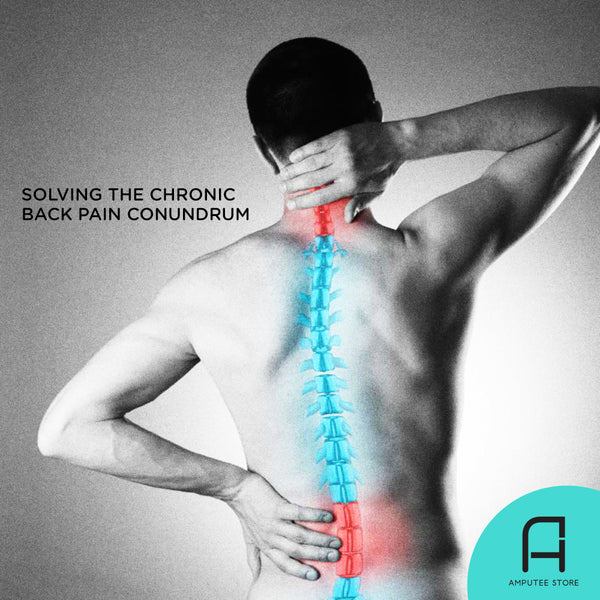Solving the Chronic Back Pain Conundrum
Chronic back pain is identified as one of the common complaints of American adults, along with headaches, joint pain, and nerve pain. While not fatal as other chronic conditions, back pain, especially along the lower back, makes the lives of many prosthetic users miserable.

According to one study, Americans spent $88 billion on medical treatments for back and neck pain in 2013 alone—a great deal of money which does little good. MRI scans show that chronic back pain is not experienced in the body, but the brain. Only 5 to 15% of people with back pain had a definitive physical cause, such as arthritis, a fracture, pressure on a nerve, a tumor, or infection. The rest is labeled as "non-specific."
This finding isn't surprising since nerves tell the brain that something is wrong, which triggers the brain to project an appropriate sensation of pain. This mechanism is similar to what happens in the body when it feels phantom limb pain. But as for chronic back pain, researchers that specialize in pain believe that when the system becomes damaged in some way, the pain is kept on. Furthermore, many experts believe that back pain can also be indicative that other aspects of a person's life may not be going well.
If this view is to be believed, many of the existing treatments for back pain only silence the alarm, not the actual pain. Paracetamol and other similar medicines don't work for back pain, but opioids offer a little relief. But there's a caveat: the continued use of opioids often makes the pain worse, and it is highly likely to cause addiction.
Despite evidence of ineffectiveness, doctors haven't stopped writing prescriptions for these drugs. This provides a fertile ground for deceptive marketing as well as inadequate prescriptions.
Furthermore, existing practices for looking at the back are seen as problematic. Medical guidelines in Europe and the US say that a patient should only be given an MRI scan or an x-ray if other symptoms that indicate urgent problems are present, such as fever, incontinence, or weight loss. Of the total number of people who suffer from back pain, only 1 to 5% will require urgent care. But general physicians and hospitals ignore this. Around 40 to 60% of people are sent to be scanned.
This practice would be fine if x-rays weren't harmful. However, both patients and doctors tend to think that they have to do something, even if a healthy back can sometimes look strange. This often leads to unnecessary surgeries. An example is spinal fusion, a surgical procedure that fuses the vertebrae of the spine, limiting a person's range of motion. Experts say that 87% of those who undergo this surgery still suffer from back pain two years later.
If current medical treatments cannot get to the bottom of back pain, then what other options are there? The answer may be simpler and cheaper but requires patience and consistency: staying active.
Various countries have tried to encourage people with back pain to stay active. In Australia, this campaign is said to have led to a 15% reduction in the number of doctor visits for back pain and a 20% decrease in related medical costs. But these campaigns work best when patients are provided with practical advice on how to stay active despite the pain. Consistency is the key.
Some back pain sufferers find relief or manage their pain by stretching in the mornings and often throughout the day. Regular activity, like working out for 30 minutes to an hour, also helps raise the quality of life.
Do you suffer from chronic back pain? What do you do to relieve or manage your pain, assuming your prosthesis is at the correct height?









































































